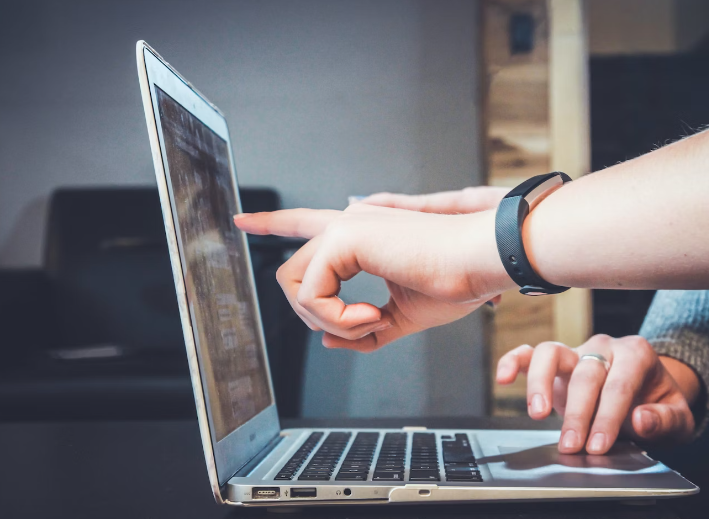Do you want to know how AI detectors work? You are in the right place! In this article, we delve into the intricacies of how AI detectors function, evaluate their reliability, and explore their applications.
In an era where artificial intelligence (AI) is booming and has become an integral part of our daily lives, it is essential to comprehend the mechanisms behind AI detectors.
These detectors, also known as AI writing detectors or AI content detectors, are designed to discern whether a text is human-generated or crafted by AI tools such as ChatGPT.
Let us get right into it.
How Most AI Detectors Work
AI detectors are predominantly built on language models like those used in AI writing tools. They are developed to analyze an input text and compare it to what an AI would generate.
Essentially, these detectors concentrate on two key aspects of a text – perplexity and burstiness.
1) Perplexity
Perplexity gauges the unpredictability of text. A text that employs creative language choices and is less structured is likely to have a higher perplexity.
Conversely, AI models strive to fabricate texts with low perplexity, which read more smoothly and logically but tend to be more predictable.
Consequently, AI detectors take low perplexity as an indication of AI-generated content.
2) Burstiness
Burstiness, on the other hand, measures variations in sentence structure and length. AI-generated text usually exhibits low burstiness as AI tends to create sentences of average length with conventional structures, making them appear monotonous.
Low burstiness, therefore, signals that a text is likely generated by AI.
The Watermarking Approach
One alternative to perplexity and burstiness analysis is watermarking. OpenAI, the organization behind ChatGPT, has proposed embedding invisible watermarks in texts produced by their tool.
These watermarks could then be detected to confirm if a text was AI-generated.
However, this technology is still under development, and questions remain regarding its effectiveness, especially if the text undergoes subsequent editing.
Reliability of AI Detectors
AI detectors have shown promise but are not flawless. Their performance can vary, especially if AI-generated content is manually edited or intentionally made unpredictable.
While premium AI detectors have exhibited accuracy rates around 70%, it is advisable not to solely rely on them as definitive proof.
Furthermore, the rapidly evolving nature of AI language models makes it an ongoing challenge for detectors to keep pace.
Applications of AI Detectors
Educational Institutions
Teachers and university instructors use AI detectors to ensure that students’ work is original.
Publishers
They employ these tools to make certain that content is human-written.
Recruiters
AI detectors assist recruiters in verifying the authenticity of candidates’ cover letters.
Web Content Writers
They use these tools to check whether their AI-generated content would rank lower in search engines if identified as such.
Social Media Moderators
Moderators use AI detectors to combat automated misinformation by identifying AI-generated spam and fake news.
Despite their utility, users often remain cautious due to concerns regarding the detectors’ reliability.
AI Detectors vs. Plagiarism Checkers
It is important to differentiate between AI detectors and plagiarism checkers. While AI detectors analyze text characteristics like perplexity and burstiness, plagiarism checkers compare text against a database of sources to find similarities.
Detecting AI Writing Manually
In addition to AI detectors, individuals can hone skills to identify AI-generated content manually. For instance, they can look for texts that read monotonously, have predictable word choices, or utilize overly polite language.
Moreover, inconsistencies in voice incorrectly cited claims, and logical errors can also indicate AI-generated content.
AI Image and Video Detectors
The technology isn’t limited to text; AI image and video generators are also burgeoning. Detecting AI-generated images and videos, often referred to as “deepfakes,” is essential to counter the spread of misinformation. AI image and video detectors are specialized tools developed to identify these deepfakes.
Currently, many AI-generated images and videos have noticeable flaws such as anatomical errors, unnatural movements, nonsensical text, or unconvincing faces. However, as the technology advances, these artifacts are likely to diminish, making manual detection more challenging.
AI image and video detectors typically employ neural networks to analyze visual data. They can be trained to recognize patterns and inconsistencies that are common in AI-generated content. These detectors analyze various features, including facial expressions, background noise, and lighting, to determine the authenticity of the content.
However, similar to AI text detectors, AI image and video detectors also face challenges in accuracy. As deepfake technology evolves, the detectors must constantly be updated and improved to maintain efficacy.
Future Prospects and Challenges
As AI technology continues to advance, it becomes increasingly vital for AI detectors to keep pace. Continuous research and development are necessary to improve the accuracy and reliability of these tools.
Moreover, ethical considerations come into play. As AI detectors become more pervasive, it is essential to establish guidelines and policies regarding their use, especially in academic settings and content creation.
Conclusion
AI detectors serve as crucial tools in the modern digital age for ensuring the authenticity and integrity of content.
While they are invaluable, users must be cautious and critical in employing these tools, considering their current limitations and the rapidly evolving landscape of AI technology.
Additionally, individuals are encouraged to develop their skills in manually detecting AI-generated content as a supplementary measure.
We hope this post helped you to learn how AI detectors work.
See Also
